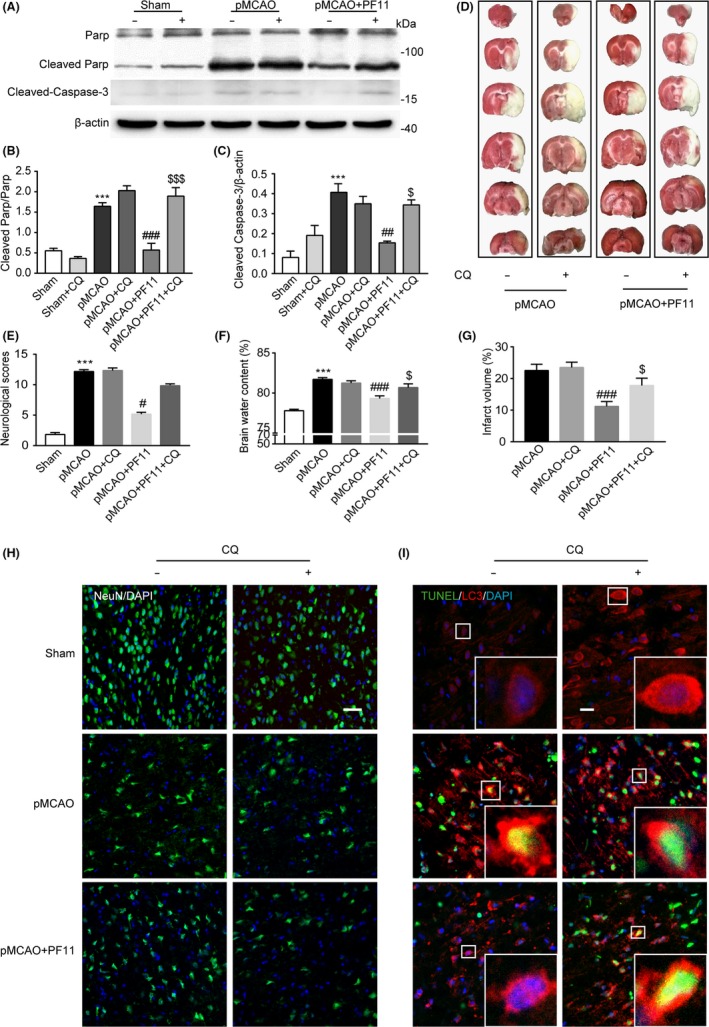Figure 6.

The protective effect of PF11 on ischemic stroke is abolished by CQ. (A‐C) Western blot analysis showing the expression of the apoptosis‐related proteins Cleaved Parp and Cleaved Caspase‐3 (A) and their ratio normalized to the loading control (B and C) in the sham‐operated rats with or without CQ, pMCAO‐operated rats with or without CQ, and pMCAO+PF11‐treated rats with or without CQ. Statistical comparisons were carried out with ANOVA followed by Tukey's test. Data are presented as means±SEM. ***P<.001 vs sham group; ###P<.001, ##P<.01 vs pMCAO group; $$$P<.001, $P<.05 vs pMCAO+PF11 group; n=4. (D and G) TTC staining showing the cerebral infarct volume in rats treated with PF11 with or without CQ. (E) Brain water content measured at 24 h following ischemic insult in rats treated with PF11 with or without CQ. (F) Neurological scores of sham‐operated rats and pMCAO rats treated with PF11 with or without CQ. Statistical comparisons were carried out with ANOVA followed by Tukey's test. Data are presented as means±SEM. ***P<.001 vs sham group; ###P<.001, #P<.05 vs pMCAO group; $P<.05 vs pMCAO+PF11 group; n=6. (H) Immunofluorescence images showing the NeuN immunoreactivity of cells in the cortex of sham‐operated rats and pMCAO rats treated with PF11 with or without of CQ. Scale bar=20 μm. (I) Immunofluorescence studies showing TUNEL‐positive nuclei (green) and LC3‐positive vesicular “puncta” (red) in cells in the cortex of sham‐operated and pMCAO‐operated rats treated with PF11 with or without CQ. High‐magnification images of the boxed areas are shown in the inserts. Scale bar=10 μm. PF11 (12 mg/kg, i.v.) was administered at 0.5 h after the onset of pMCAO. CQ (25 mg/, i.c.v.) was administered at 5 h before the animals were killed
